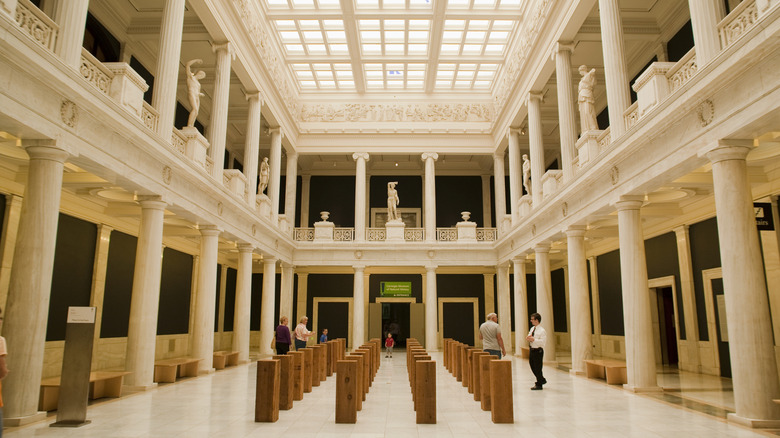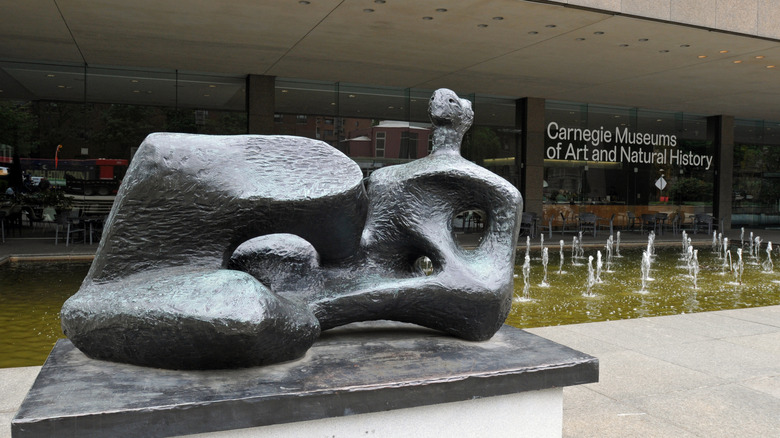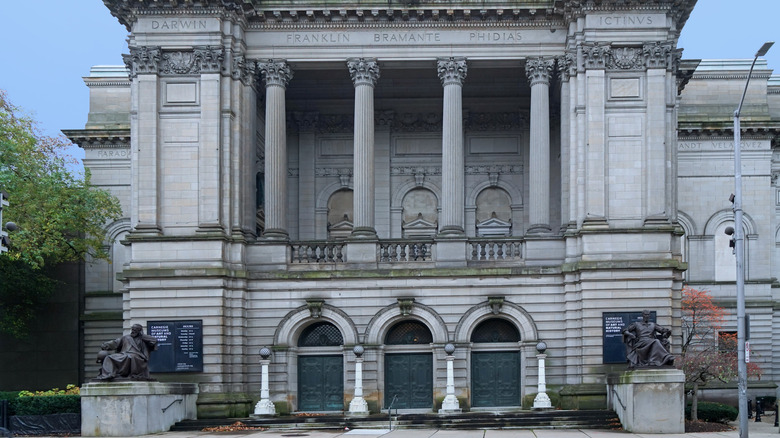The 'Crown Jewel' Of Pittsburgh's Museum Scene Is A Breathtaking Art Location With A Diverse Collection
From its industrial past to its modern creative scene, Pittsburgh has long been a hub for innovation and artistic expression. It's the birthplace of Andy Warhol, home to striking murals that brighten its neighborhoods, and the site of Randyland, a free, open-air art landmark of color and creativity — all of which is to say it's one city that's a dream come true for art lovers. And if you're looking for a more classical — and equally inspiring — art experience, the Carnegie Museum of Art is the place to be. With a collection of over 34,000 works from the 19th century to today, all housed in a grand, historic building, this museum offers an experience as visually stunning as the masterpieces within it.
One of four Carnegie museums in Pittsburgh, this art institution was founded in 1895 by industrialist Andrew Carnegie. It has since been recognized as one of the "crown jewels" of Pittsburgh's museums by Discover the Burgh. The museum's highlights range from an intricate miniatures gallery to a breathtaking Hall of Architecture, an outdoor sculpture court, and world-class paintings by artists like Claude Monet and Winslow Homer. Best of all, it shares a building with the Carnegie Museum of Natural History, meaning visitors can easily explore two fascinating museums in one trip.
A grand entrance and timeless masterpieces at the Carnegie Museum of Art
The first thing you'll notice when you step into the Carnegie Museum of Art is the sweeping Grand Staircase. Built in 1907 as part of an expansion, the staircase is lined with towering columns and flanked by John White Alexander's 4,000-square-foot mural "The Crowning of Labor." The staircase connects the museum's three distinct floors: The first features the sculpture and architecture halls, the second is home to the modern art galleries and rotating exhibitions, and the third is where you'll find the Carnegie Museum of Natural History.
On the first floor, the Hall of Architecture holds the United States' largest collection of plaster architectural casts. Tripadvisor reviewer @gt6243c raved, "The Hall of Architecture was a real highlight. I felt like I had traveled the world by walking through this gallery and seeing the casts from so many regions and periods of history." During the holiday season, this hall transforms into a festive display of decorated evergreens for the museum's annual Carnegie Trees installation. Tucked between this grand hall and the Hall of Sculpture is one of the museum's most unique treasures: the Miniatures Gallery, a collection of over 20 intricately designed miniature rooms by Ruth McChesney.
Upstairs, the second floor holds the Scaife Galleries, a winding route of rooms that create a thought-provoking juxtaposition of artistic styles. You'll find impressionist masterpieces like Claude Monet's "Water Lilies" alongside cutting-edge contemporary works, including Dan Graham's mirrored installation "Heart Pavilion." One can't-miss collection is the Charles "Teenie" Harris Archive, which features over 70,000 photographs capturing the lives of Pittsburgh's Black communities in the mid-20th century. Another standout is Extraordinary Ordinary Things, an exhibition that elevates everyday objects like chairs and lamps into pieces of functional art.
How to plan your visit to the Carnegie Museum of Art
Once you've explored the museum's galleries, consider heading upstairs to the Carnegie Museum of Natural History, included with the single-ticket price of admission. Be sure to check out the museum's gift shop, where you'll spot a hidden artistic gem: Andy Warhol's pop-art portraits of Andrew Carnegie himself. When it's time for a break, Café Carnegie offers a selection of bites, or you can enjoy some fresh air in the outdoor Sculpture Court, home to the museum's most sprawling sculptural works.
Located in the city's Oakland neighborhood, the museum is easy to reach by public transit, with bus stops located just in front. If you're flying in, Pittsburgh International Airport is about 30 minutes away by car. The museum is open daily from 10 a.m. to 5 p.m., with extended hours until 8 p.m. on Thursdays. If you're driving, there's a parking garage behind the museum with tiered rates based on length of stay. For a unique addition to your Pittsburgh itinerary, consider pairing your visit with The Weeping Glass, Pittsburgh's secret sanctuary of macabre art.


